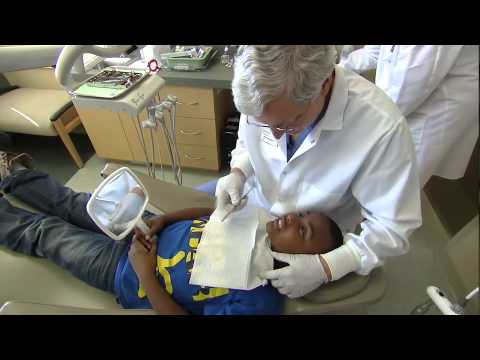Medical Assistants Versus Nurses: Who Does What?
Contents
- Job responsibilities of Medical assistants vs. nurses
- Education and training requirements for medical assistants vs. nurses
- Salary and job outlook for medical assistants vs. nurses
- The role of medical assistants in patient care
- The role of nurses in patient care
- The similarities and differences between medical assistants and nurses
- The pros and cons of a career as a medical assistant or nurse
- The challenges and rewards of a career as a medical assistant or nurse
- What patients think of medical assistants and nurses
- Tips for choosing a career as a medical assistant or nurse
Medical assistants and nurses are both vital members of the healthcare team. But what exactly do they do? Let’s take a look at the roles of these two important professions.
Checkout this video:
Job responsibilities of Medical assistants vs. nurses
The job responsibilities of Medical Assistants vs. nurses can be confusing because they overlap in some respects. Both medical assistants and nurses provide patient care, but their scope of practice varies. Medical assistants generally have more clinical duties, such as taking medical histories and vital signs, whereas nurses have more responsibility for patient education and coordination of care. Nurses also have more training and education than medical assistants. Here’s a more detailed comparison of the job responsibilities of medical assistants vs. nurses.
Medical Assistants
-Taking medical histories
-Recording vital signs
-Administering injections and immunizations
-Drawing blood
-Preparing lab specimens
-assisting with minor surgical procedures
Nurses
-Assessing patients’ health status
-Providing patient education
-Coordinating care with other health care professionals
-Administering medication and treatments
– Operating medical equipment
Education and training requirements for medical assistants vs. nurses
The education and training requirements for medical assistants and nurses are quite different. Medical assistants typically have a certificate or diploma from an accredited program, while nurses must have at least an Associate’s Degree in Nursing (ADN) from an accredited nursing program. Nurses may also choose to pursue a Bachelor of Science in Nursing (BSN) degree, which typically takes four years to complete.
Medical assistants generally perform administrative and clinical tasks in healthcare settings. They may schedule appointments, take and record patient medical histories, measure vital signs, prepare patients for examinations, assist with minor office surgeries, and give injections. Nurses, on the other hand, provide direct patient care. They assess patients’ needs and develop nursing care plans accordingly. Nurses also monitor patients’ progress, provide emotional support to patients and their families, administer medications and treatments, and educate patients about their conditions.
Salary and job outlook for medical assistants vs. nurses
Medical assistants and nurses are two of the most in-demand health care professions. Both occupations offer competitive salaries and benefits, as well as opportunities for career advancement. But what exactly do these jobs entail? And how do they compare to one another?
Medical assistants are responsible for a variety of administrative and clinical tasks in doctors’ offices, hospitals, and other health care facilities. They may schedule appointments, take patient histories, administer injections, and perform basic lab tests. Most medical assistants have at least a certificate from an accredited program, although some have associate degrees.
Nurses, on the other hand, provide direct patient care. They may work in hospitals, clinics, or doctor’s offices, but they also work in schools, camps, and even prisons. Nurses must have at least an associate degree in nursing (ADN) from an accredited program, although many nurses now have bachelor’s degrees (BSN). Some nurses also choose to specialize in a particular area of nursing, such as pediatrics or geriatrics.
So which profession is right for you? If you’re interested in a career that offers a mix of administrative work and direct patient care, then medical assisting may be the right choice. If you’re looking for a more hands-on role with patients, then nursing could be the better option. Whichever path you choose, you can be sure that you’ll be embarking on a rewarding career that offers plenty of opportunities for growth and advancement.
The role of medical assistants in patient care
Medical assistants are a vital part of the healthcare team. They work closely with both patients and doctors to provide quality care. But what exactly do medical assistants do?
There is a lot of confusion about the role of medical assistants, especially when it comes to patient care. We often hear people ask, “Should I see the nurse or the medical assistant?”
To clear up this confusion, let’s take a look at what medical assistants actually do. Medical assistants are specifically trained to perform a variety of tasks that support patients and doctors. These tasks can be divided into three main categories: clinical, administrative, and clerical.
* Clinical tasks involve direct patient care. Medical assistants may take vital signs, such as blood pressure and temperature, and document them in the patient’s chart. They may also prepare patients for examination, assist the doctor during the exam, and instruct patients on how to properly take their medication.
* Administrative tasks include scheduling appointments, verifying insurance coverage, and handling billing and coding paperwork. Medical assistants may also be responsible for handling laboratory results and X-rays.
* Clerical tasks involve maintaining medical records and filing insurance forms. Medical assistants may also answer phones and take messages for the doctor.
As you can see, medical assistants play a vital role in patient care. They provide both clinical and administrative support to patients and doctors alike. So next time you’re wondering whether you should see the nurse or the medical assistant remember that medical assistants are specially trained to provide quality care for all your needs!
The role of nurses in patient care
Nurses play a vital role in patient care. They are the front line of the medical profession, and their job is to assess patient needs, provide care and support, and promote healing. Nurses work in a variety of settings, from hospitals and clinics to patients’ homes and long-term care facilities.
Nurses are highly trained professionals who have completed a rigorous education and certification process. Their skillset includes assessment, diagnosis, and management of patients’ medical conditions. In addition to providing direct patient care, nurses also play an important role in educating patients and families about their health. They work collaboratively with physicians and other members of the healthcare team to ensure that patients receive the best possible care.
The similarities and differences between medical assistants and nurses
Medical assistants and nurses are both vital members of the healthcare team. They both work closely with patients and families to provide direct care and support. However, there are some key differences between these two roles.
Medical assistants are primarily responsible for providing clinical support to physicians and other healthcare providers. This includes tasks such as taking medical histories, measuring vital signs, administering injections, and assisting with minor surgeries. Nurses, on the other hand, have a more comprehensive scope of practice. In addition to performing many of the same tasks as medical assistants, nurses also provide patient education, monitor patients for changes in condition, and coordinate care with other members of the healthcare team.
The pros and cons of a career as a medical assistant or nurse
A medical assistant or nurse are both important members of a healthcare team. They both provide care to patients, but there are some key differences between the two roles. Medical assistants typically have more clinical duties, such as taking vital signs and giving injections. Nurses have more administrative duties, such as charting and coordinating care. Both medical assistants and nurses must be able to work well under pressure and have excellent communication skills.
The challenges and rewards of a career as a medical assistant or nurse
The job outlook for medical assistants and nurses is good, with both occupations expected to grow much faster than the average for all occupations through 2024, according to the U.S. Bureau of Labor Statistics (BLS).
Medical assistants perform administrative and clinical tasks to support the work of physicians and other health care professionals. They typically work in outpatient care centers, physician’s offices, and hospitals. Nurses provide direct patient care and often work in hospitals, but they also work in a variety of other settings, such as schools, long-term care facilities, and homes.
Both medical assistants and nurses have rewarding careers with opportunities to make a difference in people’s lives. However, there are some important differences between these two occupations. Medical assistants typically have less formal education than nurses; they typically complete a 1- or 2-year medical assisting program and earn a certificate or diploma. Nurses must complete a nursing program at either the associate’s degree or bachelor’s degree level and must be licensed by their state.
Nurses have more responsibilities and autonomy than medical assistants. They provide direct patient care, whereas medical assistants typically do not. Nurses also develop patient care plans, teach patients about their conditions, and provide emotional support to patients and their families. In addition, nurses supervise medical assistants and other members of the health care team.
What patients think of medical assistants and nurses
A study conducted by the University of Pennsylvania School of Nursing found that patients overwhelmingly preferred nurses over medical assistants for a variety of tasks, including providing emotional support, answering questions about their care, and communicating with doctors on their behalf.
The study’s authors say the findings suggest that patients see nurses as more competent and trustworthy than medical assistants, and that they view nurses as playing a more important role in their care.
The study’s authors say the findings suggest that patients see nurses as more competent and trustworthy than medical assistants, and that they view nurses as playing a more important role in their care.
But while patients may prefer nurses over medical assistants, the reality is that both groups play an important role in providing quality health care. Medical assistants typically have more direct patient contact than nurses, and they play a vital role in carrying out treatments and procedures. Nurses, on the other hand, typically have more training and experience than medical assistants, and they play a vital role in coordinating patient care.
Tips for choosing a career as a medical assistant or nurse
Medical assistants and nurses are both vital members of the healthcare team. Both professions require a passion for helping others and a dedication to providing high-quality patient care. But what exactly do medical assistants and nurses do? And how do you know which career is right for you?
Here are some tips to help you choose between a career as a medical assistant or nurse:
1. Consider your interests. Do you like working with patients? Do you enjoy administrative work? Do you prefer hands-on care or supervising care teams? Your interests can help guide your decision between becoming a medical assistant or nurse.
2. Consider your skills. Medical assistants need strong communication, customer service, and organizational skills. Nurses need excellent critical thinking, problem-solving, and multitasking skills. If you have the skillset required for one profession but not the other, that could be a deciding factor in your choice.
3. Consider your career goals. Are you looking for a long-term career in healthcare? Or are you interested in finding a job that will give you flexible hours or the opportunity to work from home? Medical assistants and nurses both have opportunities for advancement, but their career paths differ slightly. If you know what you want from your career, that can help you choose between becoming a medical assistant or nurse.







